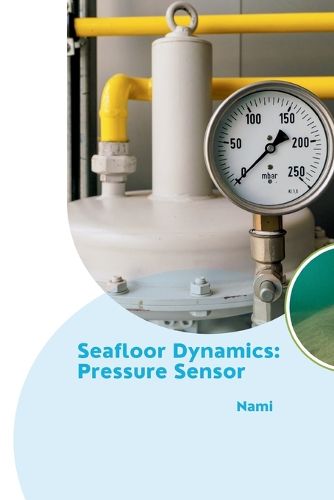Readings Newsletter
Become a Readings Member to make your shopping experience even easier.
Sign in or sign up for free!
You’re not far away from qualifying for FREE standard shipping within Australia
You’ve qualified for FREE standard shipping within Australia
The cart is loading…






: In this thesis, the focus is to design and test a pressure sensor intended for taking measurements at the ocean-bottom to quantify small pressure perturbations in large ambient pressure ranges. This is a situation that arises in oceanographic circumstance such as seafloor vertical deformation or tsunami detection and characterization. The use of ocean-bottom pressure sensors in monitoring vertical deformation in the seafloor is important for providing information on changes in the Earth's crust including earthquakes, tsunamis, and slow slip events [1]. To gather useful seafloor deformation data, an ocean-bottom pressure sensor should resolve pressure changes to within the centimeters of water [2]. For example, monitoring vertical deformation at Axial Seamount after 1998 eruption was done so in the range of tens of centimeters at a depth of 1500 m [3]. The necessity for detection of a tsunami in particular, is important to inhabitants of coastal regions to enable early warnings that can reduce causalities when a tsunami occurs. Large tsunami events such as the 2004 Indian Ocean and 2011 Tohoku tsunamis are some of the most extreme examples in recent times. These events and the possibility of future tsunami occurrences stress the necessity to develop improved advanced warning systems. A tsunami is a series of waves that propagate through the ocean, containing energy capable of displacing a volume of water larger than typical ocean waves.
$9.00 standard shipping within Australia
FREE standard shipping within Australia for orders over $100.00
Express & International shipping calculated at checkout
: In this thesis, the focus is to design and test a pressure sensor intended for taking measurements at the ocean-bottom to quantify small pressure perturbations in large ambient pressure ranges. This is a situation that arises in oceanographic circumstance such as seafloor vertical deformation or tsunami detection and characterization. The use of ocean-bottom pressure sensors in monitoring vertical deformation in the seafloor is important for providing information on changes in the Earth's crust including earthquakes, tsunamis, and slow slip events [1]. To gather useful seafloor deformation data, an ocean-bottom pressure sensor should resolve pressure changes to within the centimeters of water [2]. For example, monitoring vertical deformation at Axial Seamount after 1998 eruption was done so in the range of tens of centimeters at a depth of 1500 m [3]. The necessity for detection of a tsunami in particular, is important to inhabitants of coastal regions to enable early warnings that can reduce causalities when a tsunami occurs. Large tsunami events such as the 2004 Indian Ocean and 2011 Tohoku tsunamis are some of the most extreme examples in recent times. These events and the possibility of future tsunami occurrences stress the necessity to develop improved advanced warning systems. A tsunami is a series of waves that propagate through the ocean, containing energy capable of displacing a volume of water larger than typical ocean waves.